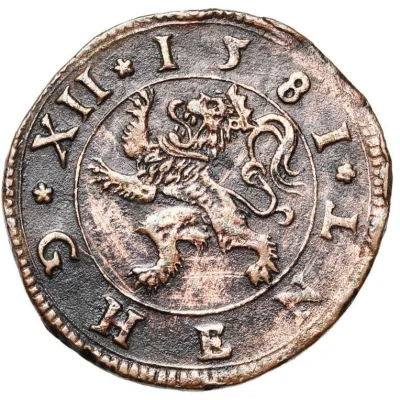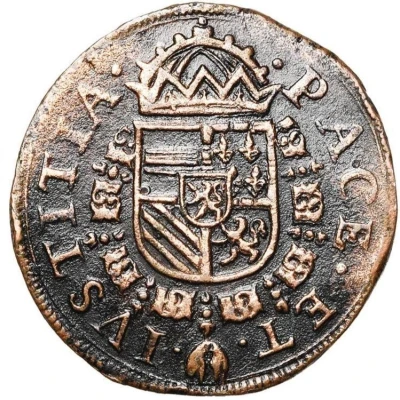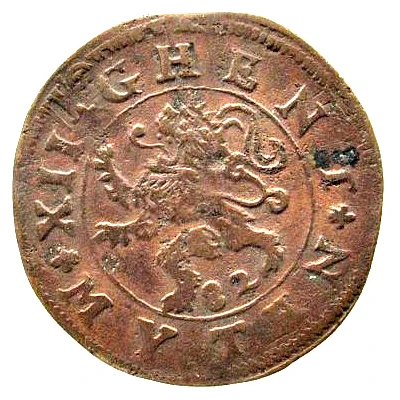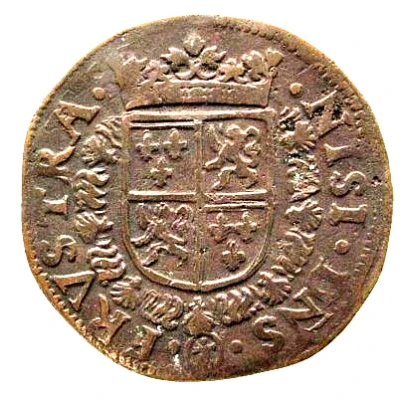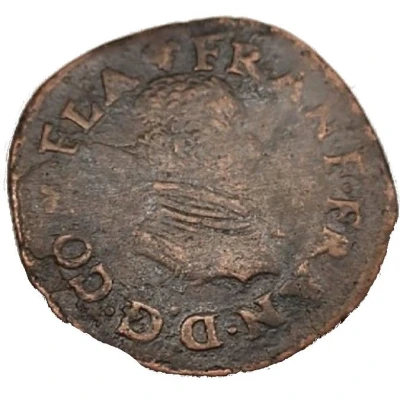
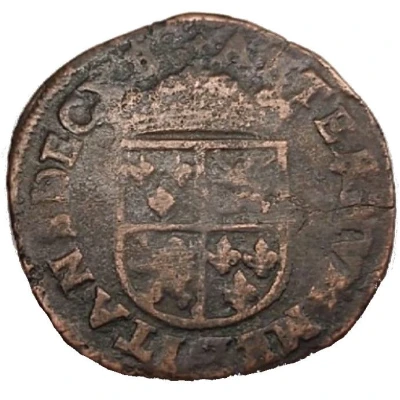

Obverse © @adilson
1 Oord / Liard - François d'Alençon, Ghent Revolt ND
| Copper | 5 g | 24 mm |
| Issuer | Spanish Netherlands (County of Flanders, Belgian States) |
|---|---|
| Period | States in Revolt (1577-1585) |
| Duke | Francis of Anjou (1582-1584) |
| Type | Standard circulation coin |
| Years | 1581-1583 |
| Value | 1 Liard (1 Oord) (1⁄80) |
| Currency | Gulden (1506-1713) |
| Composition | Copper |
| Weight | 5 g |
| Diameter | 24 mm |
| Shape | Round (irregular) |
| Technique | Hammered |
| Orientation | Coin alignment ↑↓ |
| Demonetized | Yes |
| Updated | 2024-10-04 |
| Numista | N#316976 |
|---|---|
| Rarity index | 90% |
Reverse
Crowned arms of Anjou-Flanders.
Script: Latin
Lettering: AETERNUM. MEDITANS. DECUS
Translation: Aspiring to eternal glory
Comment
The coinage of the Duke of Alençon (1582-1584)After having tried in vain to obtain the hand of Queen Elisabeth of England, the Duke of Anjou returned to the Low Countries and there he was sworn in as Duke of Brabant in February 1582, then Earl of Flanders in July 1582. The northern provinces refused. to recognize while those of the South (Luxembourg, Namur, Hainaut, Artois) joined the Duke of Parma as early as 1579. Flanders and Brabant maintained the monetary policy adopted in 1579 and continued to mint according to the same system, but replacing the name of the king with that of the new sovereign, François d'Anjou, Duke d'Alençon. This coinage consisted of gold and half ecus silver crowns (299), minted on an equal footing with Philippe's gold and half ecus crowns. François d'Alençon's gold crown is extremely rare (Veldeman collection, Elsen, sale 62, June 24, 2000, 979). Liards were also minted in his name. Despite a promising start, François d'Alençon quickly became unpopular because of his proud character. The legend of their coins attests to this: Aeternum meditans decus (aspiring to eternal glory). Wanting to transform his state-controlled sovereignty into absolute power, the Duke of Alençon ceased to be recognized by the city of Ghent in 1582. In January 1583, the Duke's French troops tried to take the main fortresses by surprise. Flanders and Brabant but were repulsed. The Estates and Anjou could not be reconciled, as Alexander Farnese took place after place. Judging the situation to be hopeless, the Duke left Holland for good in June 1583 and died the following year at Château-Thierry, aged 28.
Interesting fact
One interesting fact about this coin is that it was minted during the Ghent Revolt, a period of political and social unrest in the Spanish Netherlands (now part of Belgium) in the late 16th century. The coin's design features François d'Alençon, a prominent nobleman who supported the rebels, and the coat of arms of Ghent. The coin's minting was likely a way for the rebels to assert their independence and challenge the authority of the Spanish crown.
